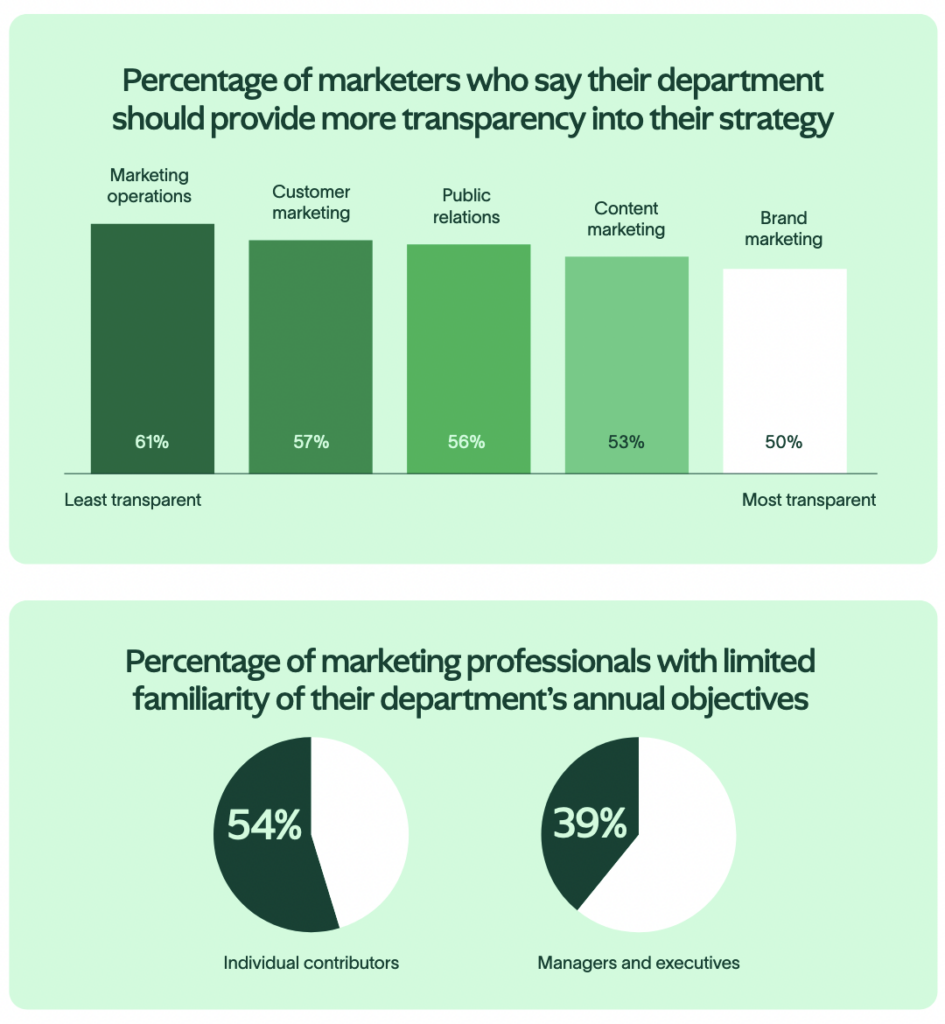
According to Meltwater and Asana’s recent State of Marketing Collaboration report, the most successful marketers share five key habits or capabilities allowing them to achieve great results through collaboration. The research, which surveyed 830 marketing professionals in the U.S. and UK in April 2024, examined how marketers are collaborating across their organizations, what’s working, what’s challenging, and the distinct habits and qualities that translate to success.
“As marketers, we instinctively know the value of collaboration. It’s not a question of whether collaboration is important; it’s essential. It’s mission critical to our success,” said Rebecca Hinds, Head of the Work Innovation Lab at Asana, while presenting at the 2024 Meltwater Summit in New York City this past June. Marketers consider themselves strategic collaborators—and they’re viewed by their organizations as such: 74% percent of marketing professionals say their teams are seen as strategic collaborators within marketing overall. Moreover, 73% of say their teams are viewed as strategic collaborators to other teams outside of marketing.
However, more collaboration isn’t necessarily the solution, Hinds warned. “Collaboration is expensive. It requires hard work, it requires effort, it requires cooperation, conflict resolution meetings…” What’s important is collaborating with the right people and teams at the right time, using the right technologies. Hinds identified the following as five key habits shared by marketers who are driving results for themselves, their teams and their organizations.
-
They focus on aligning marketing goals with business objectives.
About half of marketing professionals (54%) say they’re unable to name their marketing department’s annual objectives with confidence. “We see this lack of clarity across entire marketing teams at all levels, but it’s especially significant among those individual contributors,” Hinds said.
Clarity of marketing goals isn’t enough, however. The next critical step is alignment. And yet, only 39% of marketers say that the marketing goals within their organization are aligned with business objectives. “It means about 60% of your employees are likely working towards goals that don’t really matter all that much to your business,” Hinds said. “It’s a massive missed opportunity.”
The reason for the disconnect and missing piece, according to Hinds, is the lack of systematic, rigorous tracking and sharing of goals. “About one quarter of marketers say their goals are spread across too many different places, and about half of marketers say their goals are still communicated via email lost in inboxes, subject to version control and other issues,” Hinds said.
-
They embrace a data-driven approach.
Modern marketing success depends on data—and with AI in the picture, that becomes even more important. According to the report, only a third of marketers say they’re highly familiar with their marketing organization’s measurement plan. Moreover, less than one in five marketers at the individual contributor level say they know how their department measures impact. “The only key way we can ensure that we’re driving impact is to know how impact is being measured,” said Hinds.

-
They bridge silos within their marketing teams.
Marketers are required to collaborate with various teams, including PR, social media, product marketing and customer marketing. “And yet what we discovered in the research is that there are critical silos that exist amongst our marketing team,” Hinds said. According to the survey, three in particular warrant some relationship building: collaboration between PR and social media teams; customer marketing and product marketing; and marketing teams collaborating with marketing ops and analytics.
-
They bridge silos between marketing and other departments.
According to the Work Innovation Lab’s extensive research on collaboration, there’s a sweet spot to hit. “We don’t want too much of it, but we don’t want not enough of it,” Hinds said. “This relationship also holds for cross-functional work… The most effective organizations have about 30-50% of all collaboration happening cross-functionally.”
The three critical silos between marketing teams and other departments that need to be bridged are: marketing and sales; marketing and IT; and marketing and engineering. Regarding the latter, Asana’s research suggests that the single biggest predictor of work effectiveness, particularly with innovation, is the collaboration between marketing and engineering. Though the match-up may not be intuitive, the through line is storytelling. “Marketers are responsible for telling stories that resonate with customers, and engineering is responsible for building product that bring those stories to life,” Hinds said.

-
They leverage AI as their newest collaborator.
Rather than perceiving AI as merely a tool, the most successful marketers think more holistically about how they can use the technology across multiple different workflows and use cases. “The most mature organizations think about and frame AI fundamentally differently than the less effective ones,” Hinds said. “Companies that have used AI to actually realize results have more of their employee base and many more marketers conceptualizing AI not as a tool, but as a teammate.”
But only a quarter of marketing professionals have said they’ve received any training on how to use AI within their organizations, which Hinds sees as a missed opportunity. “Training is essential for multiple different reasons… They are not only more confident in their ability to use the technology, but they’re also more optimistic about them and more enthusiastic that that AI will have a positive impact on their work and their marketing success.”




